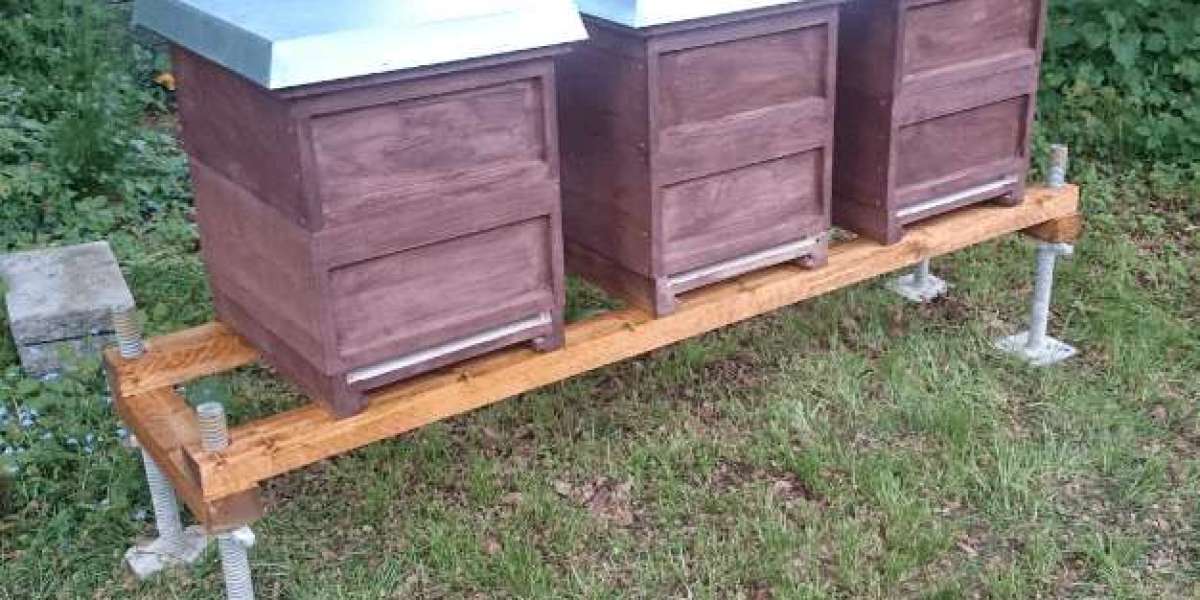A thriving apiary starts with smart beekeeping practices—and one of the most overlooked yet essential components is the bee hive stand. While beginners often focus on protective gear like the best bee suits for beginners, the foundation of your hive plays a crucial role in colony health.
Proper hive placement, ventilation, and pest control all depend on a well-built bee hive stand. In this guide, we’ll explore why stands matter, how they contribute to a healthy apiary, and how they work alongside essential beekeeping equipment, including protective clothing, to ensure beekeeping success.
1. Why Bee Hive Stands Are Essential for Beekeeping
Prevents Moisture and Pest Problems
A bee hive stand elevates your colony off the ground, reducing moisture buildup inside the hive. Damp conditions can lead to mold, mildew, and even deadly fungal infections. Additionally, raising the hive deters small predators like ants, skunks, and rodents—common threats in beekeeping for beginners.
Improves Hive Ventilation
Proper airflow is critical for regulating hive temperature. A sturdy stand allows air to circulate underneath, preventing condensation in winter and overheating in summer. This is especially important for beginners who may not yet recognize early signs of poor hive health.
Makes Hive Inspections Easier
A well-positioned bee hive stand brings the colony to a comfortable working height, reducing back strain during inspections. This is a game-changer for beekeepers who frequently check frames, monitor honey production, or look for pests like Varroa mites.

2. Must-Have Beekeeping Equipment for Beginners
Setting up a successful apiary requires more than just a hive—it demands the right tools and protective beekeeping gear. Here’s what every beginner needs:
Bee Hive Stands (Sturdy & Elevated)
Wooden stands – Affordable and customizable, but require maintenance.
Metal stands – Durable and resistant to rot, but may need insulation in cold climates.
Concrete blocks – A budget-friendly, temporary solution.
Protective Beekeeping Gear
Best bee suits for beginners – Full-body suits with beekeeping veils offer the best protection.
Gloves – Go for durable yet flexible options for better hive handling.
Veils & Helmets – Prevent stings to the face while allowing clear visibility.
Additional Essential Tools
Smokers – Calms bees during inspections.
Hive tools – Helps pry apart frames and scrape off excess wax.
Feeders – Supports colonies during nectar shortages.
3. The Best Bee Suits for Beginners: Safety First
While bee hive stands protect your hive from the ground up, protective beekeeping gear shields you from stings. Choosing the right bee suit is crucial for comfort and safety.
Why a Good Bee Suit Matters
Prevents stings – Even docile bees can become defensive.
Improves confidence – Beginners are less likely to panic when properly protected.
Enhances mobility – A well-fitted suit allows for smooth hive inspections.
Features to Look for in a Beginner Bee Suit
✔ Full-body coverage – Zippered suits prevent gaps where bees can enter.
✔ Breathable fabric – Mesh panels help in hot weather.
✔ Sting-resistant material – Thick canvas or ventilated synthetic blends offer protection.
Top Bee Suit Recommendations
Budget-Friendly Option – [Brand X] Beekeeping Suit (Lightweight, good ventilation)
Mid-Range Choice – [Brand Y] Professional Suit (Durable, reinforced seams)
Premium Pick – [Brand Z] Ultra-Secure Suit (Full leather gloves, extra-long zippers)
4. Setting Up Your Apiary: A Beginner’s Guide
Choosing the Right Location
Sunlight & Shade Balance – Morning sun warms the hive, while afternoon shade prevents overheating.
Wind Protection – Avoid open fields where strong winds can topple hives.
Water Source Nearby – Bees need fresh water, so place hives near a shallow pond or birdbath.
Proper Placement of Bee Hive Stands
Level & Stable – Uneven stands can cause honeycomb misalignment.
At Least 18 Inches High – Discourages pests and improves airflow.
Facing Southeast – Encourages early morning foraging.
Safety Measures During Inspections
Always wear protective beekeeping gear – Even quick checks can lead to stings.
Work calmly & slowly – Sudden movements agitate bees.
Use a smoker – A few puffs of smoke keeps bees docile.
5. Beekeeping Safety Tips for Beginners
Wear a Bee Suit Every Time
Some beekeepers get comfortable and skip the suit—don’t make this mistake! Even gentle colonies can become defensive due to weather, pests, or nectar shortages.
Secure Hives on Stable Stands
A wobbly hive is a hazard. Check that your bee hive stand is:
On flat ground
Free of rot or rust
Strong enough to support a full honey super
Regular Maintenance Prevents Aggression
Monitor for pests – Varroa mites weaken bees, making them more defensive.
Replace old comb – Prevents disease buildup.
Keep the apiary clean – Reduces robbing and pest infestations.
Conclusion
A healthy apiary starts from the ground up—literally. A well-built bee hive stand ensures proper ventilation, deters pests, and makes hive inspections easier. But beekeeping safety doesn’t stop there. Pairing a sturdy stand with the best bee suits for beginners and other essential beekeeping equipment creates a thriving, sting-free beekeeping experience.
Whether you're just starting or looking to improve your setup, investing in the right tools will make your beekeeping journey safer, easier, and more productive.



